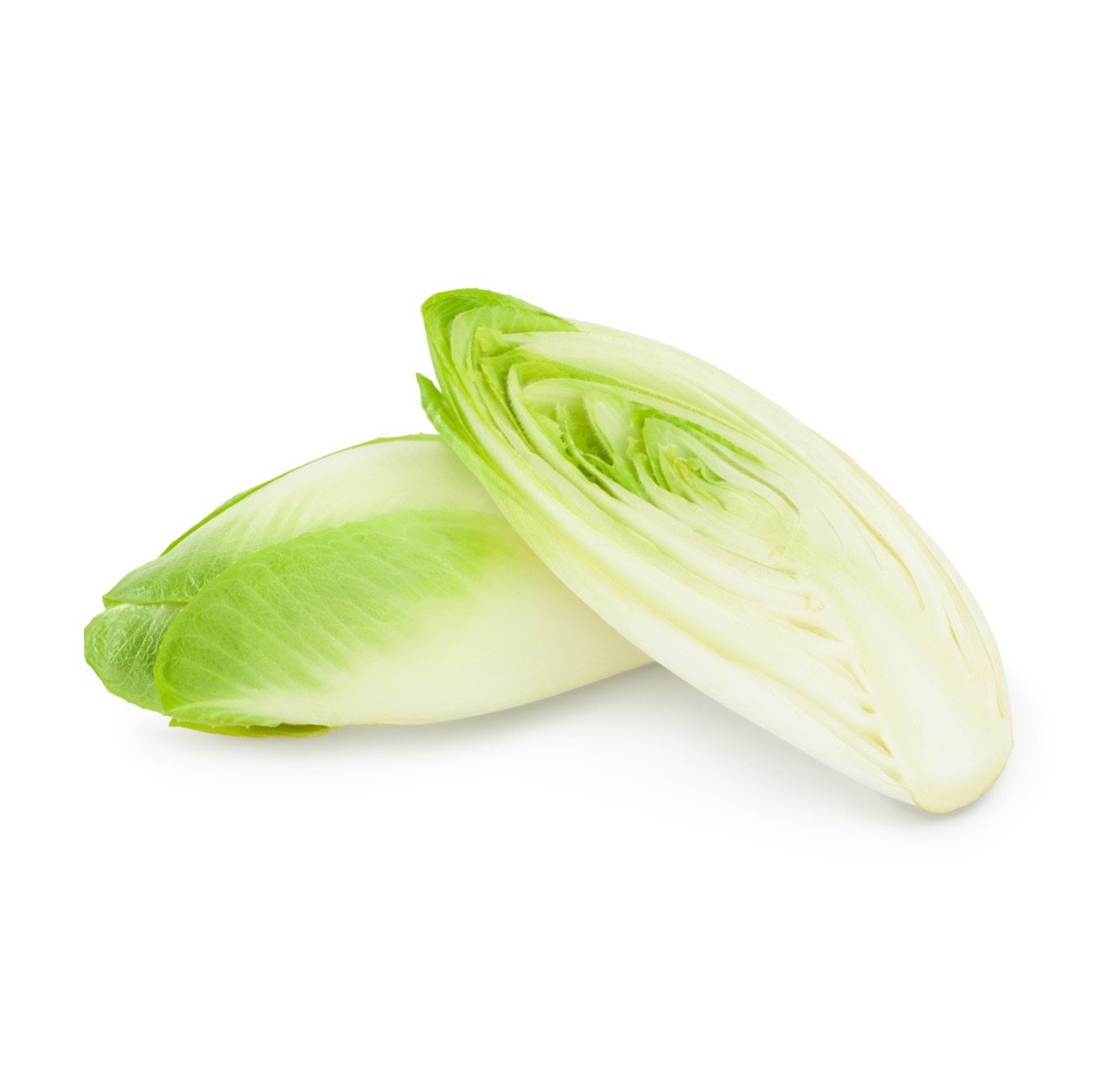Lettuce (Common chicory)

Lettuce (Common chicory)
Cichorium intybus var. foliosum
Plant family
Daisy family (Asteraceae)
Season Overview
Sowing
Harvest
J
F
M
A
M
J
J
A
S
O
N
D
Details
Light requirement
Sunny
Water requirement
Moist
Soil
Light (sandy)
Nutrient requirement
Low
Plant distance
10 cm
Row spacing
30 cm
Seeding depth
2 cm
Instructions
Description
Chicory is a typical winter vegetable (consumed from December to March), has evolved from the wild chicory (Cichorium intybus) and belongs to the Compositae family. Botanically, chicory is the shoot of the chicory root and it is classified among the chicory salads. The leaves are whitish with yellow tips and are closely superimposed in the shape of a bulb, with a hard stalk in the middle. Since chicory was discovered in Belgium, it is also called Brussels lettuce. Chicory is a 2 year old plant, which in the first year above ground form only a bitter rosette of leaves (dandelion-like), from the roots of which in the 2nd year in the dark sprout the edible tender slightly bitter cones. Root harvesting takes place September-November, so that the field then becomes free. Harvesting of chicory shoots from the cellar/dark is possible from late November to part of March. Chicory coffee can be made from the roots of chicory.
Origin:
North Africa, Central Asia, Mediterranean
Growing tips
First, the chicory seeds are sown. From them will grow beets, which will eventually be used for forcing. The soil should no longer be too cold when sowing, otherwise they can begin to shoot. A marker seed can be helpful. After 3-4 weeks, the plants can be singled to about 10cm. Water (and rake) regularly. Chicory is a rather undemanding low to medium grower and requires a sunny location with a deep, not too heavy soil. The soil should be low in nitrogen, if possible. When the leaves of the chicory turn yellow in October/November, the roots are dug out (with about 3-6 cm ø have), carefully remove the leaves and the heart is best left standing. Wrap in moist sand in a cool place at about 0-3°C for at least a week (dormancy). Then place in the dark (important, otherwise the plants will develop bitter substances) and cool to sprout, at about 10°C to max. 18°C. It is important to place the roots upright in the sand and water regularly, but not wet. After 4-6 weeks the cones (about 15cm) can be harvested. The roots will sprout again, so harvesting can be done over the winter. (Note: there are also varieties that require other growing methods, e.g. where the beets are still covered with 10cm of sand/soil into which the shoots grow). If the shoots are plopped back out into the light (2nd year March) they will also form the bee friendly blue flowers for seed (2nd year fall) (note: cross-pollination).
Companion Plants
Diseases
Powdery mildews
Pests
Leaf-miner flies
Cutworms
Aphids